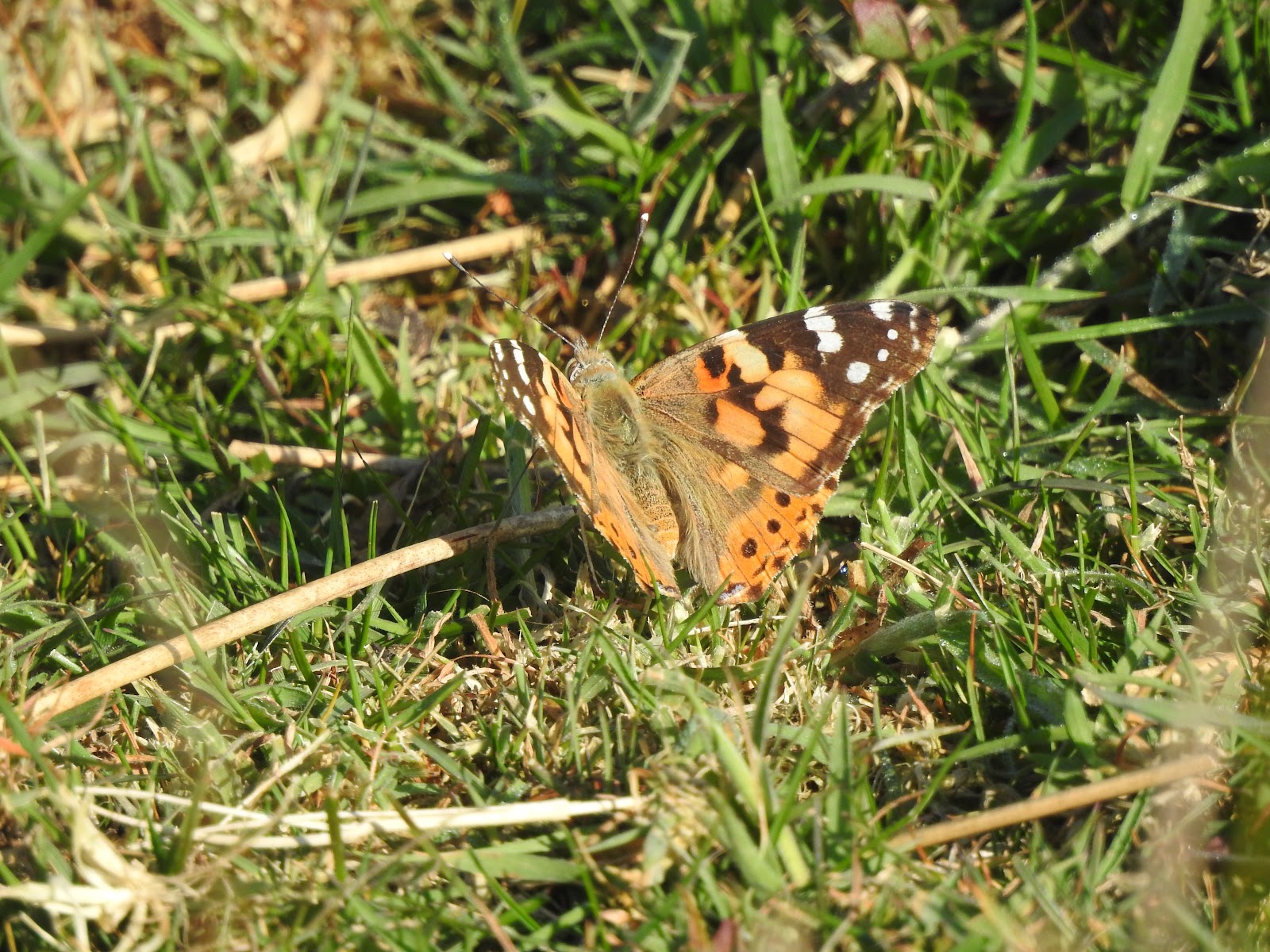Hot, calm and dry all week until strong easterly winds and rain arrived on Saturday and Sunday. Highest temperatures recorded was 18° on the 3rd June.
May is generally considered the one of the best months of the year for migration on Lundy. This year 96 species were recorded with highlights including a Bluethroat, Wood Warbler, Osprey, Blue-headed Wagtail and the islands first Mandarin.
A small flock of four Shelduck were seen flying out of the Landing Bay as the MS Oldenburg arrived on the 2nd and then two were seen on the 3rd flying up the East Coast.
A Cuckoo was present on the island on the 30th. It was first seen on the wall by Old Light and then later flying over the Pig Stys being chased by a Peregrine before disappearing down over the East Side. Low numbers of Swift were recorded this week with three on the 2nd and one on the 4th. Three Collared Dove were seen together in Millcombe on the 5th, clearly arriving during strong easterlies on the 4th. Three Black-headed Gull were seen in the Landing Bay on the 4th.
Dunlin were the only notable waders to be seen this week with one on the 3rd and 5th and a small flock of six on during rain and strong winds on the 4th. One of the Oystercatcher pairs on Rat Island are now looking after two small chicks. They are now at their loudest, calling every time a gull or Crow come near.
The best bird of prey this week was a Honey Buzzard which flew north over Acklands Moor on the 2nd. It was also seen by visitors at Millcombe and the East Coast but identified as a pale Common Buzzard. The Kestrel pair are still busy feeding young and can be seen hovering over fields all over the south of the island.
It appears that three pairs of Swallow are nest building on the island at the moment, but we are still awaiting the first eggs. Small numbers of Swallows, Sand Martins and House Martins have been passing through this week. Two Sand Martins were seen on the 30th and 2nd, with singles on 31st and 1st. The highest count of House Martins and Swallows was on the 1st, with four and 20 respectively.
A few late warblers joined the local breeders this week. Willow Warblers were recorded on the 31st, 1st, 2nd and 5th, whilst singing Sedge Warbler and Reed Warbler were heard in Millcombe on the 3rd. A high count of six Chiffchaff on the 1st and 5th will likely include a few migrant birds as well as the singing males in Millcombe and St Helens Copse. A female Whitethroat was seen with food by the Ugly with another male still singing above St John’s Valley.
Two Spotted Flycatcher were seen on 31st, 1st and 2nd with singles on 3rd and 5th. A Black Redstart was seen by Old Light in the drizzle on the 5th. At least four broods of Robin have been recorded in Millcombe so far this year with the highest containing three chicks. Wheatear have also fledged their first chicks this week with young now obvious all along the West Coast.
 |
| Juvenile Wheatear, West Coast © Stuart Cossey |
Finches recorded this week include maximum counts of five adult and four juvenile Chaffinch on the 3rd and nine adult and three juvenile Goldfinches on the 5th. Linnet counts are still around 30+ within the Quarter Wall census area. Greenfinch were reported on the 1st and 5th and two Siskin were flying along the East Side on the 3rd.
The first Silver Y moths of the year were recorded on the 3rd as well as the first Meadow Brown. A Hummingbird Hawk-moth was also present on the 3rd. The highlight of the moth traps this week was a Privet Hawk-moth on the night of the 1st.
 |
| Painted Lady © Stuart Cossey |
 |
| Hummingbird Hawk-moth, Millcombe © Zach Wait |
 |
| Privet Hawk-moth, Millcombe © Stuart Cossey |
Contributors: S Cossey, R Ellis, Z Wait, L Pirateque, J Dunning, P Holt, J Holt, R Taylor, R Taylor, C Baillie
No comments:
Post a Comment